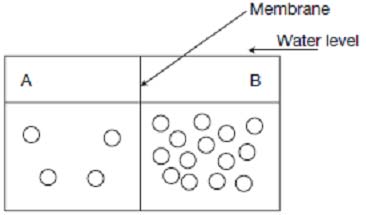Test Prep GED Section 3 Science Exam Practice Questions (P. 3)
- Full Access (75 questions)
- One Year of Premium Access
- Access to one million comments
- Seamless ChatGPT Integration
- Ability to download PDF files
- Anki Flashcard files for revision
- No Captcha & No AdSense
- Advanced Exam Configuration
Question #11
Different colors of light correspond to different wavelengths. Wavelengths are often quoted in nanometers (nm). The wavelengths of the visible part of the spectrum are shown in the diagram below.

According to the diagram, blue-green light would most likely have a wavelength of

According to the diagram, blue-green light would most likely have a wavelength of
- A670 nm.
- B550 nm.
- C350 nm.
- D470 nm.
- E700 nm.
Correct Answer:
D
The wavelength of blue-green should be between the wavelength of blue light and green light. The wavelength of blue light is about 450 nm and the wavelength of green light is at about 500 nm. Midway between these wavelengths is 470 nm.
D
The wavelength of blue-green should be between the wavelength of blue light and green light. The wavelength of blue light is about 450 nm and the wavelength of green light is at about 500 nm. Midway between these wavelengths is 470 nm.
send
light_mode
delete
Question #12
What always stays the same when a chemical reaction takes place?
- Athe number of atoms
- Bthe number of molecules
- Cthe amount of gas
- Dthe amount of solid matter
- Ethe amount of disorder
Correct Answer:
A
The number of atoms stays constant throughout a chemical reaction. The number of molecules can change (choice b). For example, in photosynthesis, 6 molecules of carbon dioxide and 6 molecules of water (total 12 molecules) can react to form 1 molecule of glucose and 6 molecules of oxygen (total of 7 molecules). Similarly, the amount of gas and solid can change (choices c and d). The amount of disorder in the universe is always increasing, so it does not have to stay constant through a reaction (choice e).
A
The number of atoms stays constant throughout a chemical reaction. The number of molecules can change (choice b). For example, in photosynthesis, 6 molecules of carbon dioxide and 6 molecules of water (total 12 molecules) can react to form 1 molecule of glucose and 6 molecules of oxygen (total of 7 molecules). Similarly, the amount of gas and solid can change (choices c and d). The amount of disorder in the universe is always increasing, so it does not have to stay constant through a reaction (choice e).
send
light_mode
delete
Question #13
Which of the following is NOT true about sunlight?
- AIt is a form of radiation.
- BIt is used as an energy source in solar-powered calculators.
- CIt contains the colors of the rainbow.
- DIts speed is infinite.
- EIt can be absorbed by plants.
Correct Answer:
D
The statement is false because light has a finite speed. It is very large, but it is not infinite. The rest of the statements are true.
D
The statement is false because light has a finite speed. It is very large, but it is not infinite. The rest of the statements are true.
send
light_mode
delete
Question #14
In order to protect themselves from being eaten, animals resort to camouflage and chemical defense. Animals camouflage by mimicking the appearance of their environment. Animals that have chemical defenses contain chemicals noxious to predators. Which of these is NOT an example of camouflage or chemical defense?
- AA walking stick insect looks just like a twig.
- BA skunk has an awful smell.
- CFeathers of the pitohui bird in New Guinea contain a deadly toxin.
- DRoses have thorns.
- EA harlequin crab looks just like the sea cucumber it lives on.
Correct Answer:
D
Thorns are a form of defense, but are neither camouflage nor chemical defense. Choices a and e are examples of camouflage. Choices b and c are examples of chemical defense.
D
Thorns are a form of defense, but are neither camouflage nor chemical defense. Choices a and e are examples of camouflage. Choices b and c are examples of chemical defense.
send
light_mode
delete
Question #15
Osmosis is the movement of water across a selectively permeable membrane in order to equalize the concentration (the amount of protein per milliliter of water) on two sides of the membrane. Consider the diagram below. The container is divided into two compartments, A and B, by a selectively permeable membrane.
Each circle represents 100 protein molecules that cant pass through the membrane. The amount of water on two sides of the membrane is initially equal. What will happen as a result of osmosis?

Each circle represents 100 protein molecules that cant pass through the membrane. The amount of water on two sides of the membrane is initially equal. What will happen as a result of osmosis?

- AProtein will flow from compartment B to compartment A.
- BProtein will flow from compartment A to compartment B.
- CWater will flow from compartment B to compartment A.
- DWater will flow from compartment A to compartment B.
- EBoth water and protein will flow from compartment B to compartment A.
Correct Answer:
D
The concentration of protein in compartment B is higher. Because of the nature of the membrane, the protein cant pass through it. The only way for concentration to reach the same level in two compartments is for water to flow from A to B.
D
The concentration of protein in compartment B is higher. Because of the nature of the membrane, the protein cant pass through it. The only way for concentration to reach the same level in two compartments is for water to flow from A to B.
send
light_mode
delete
All Pages
